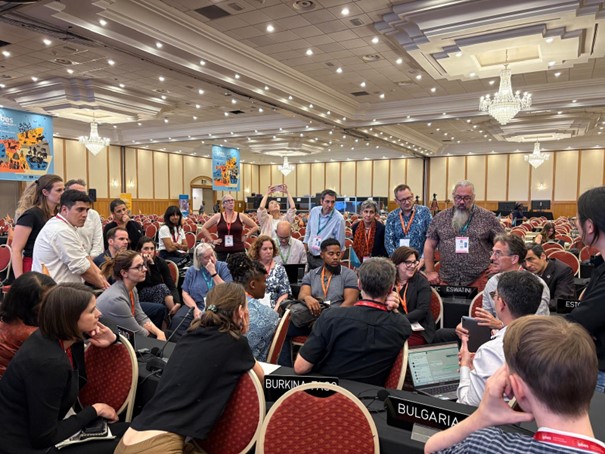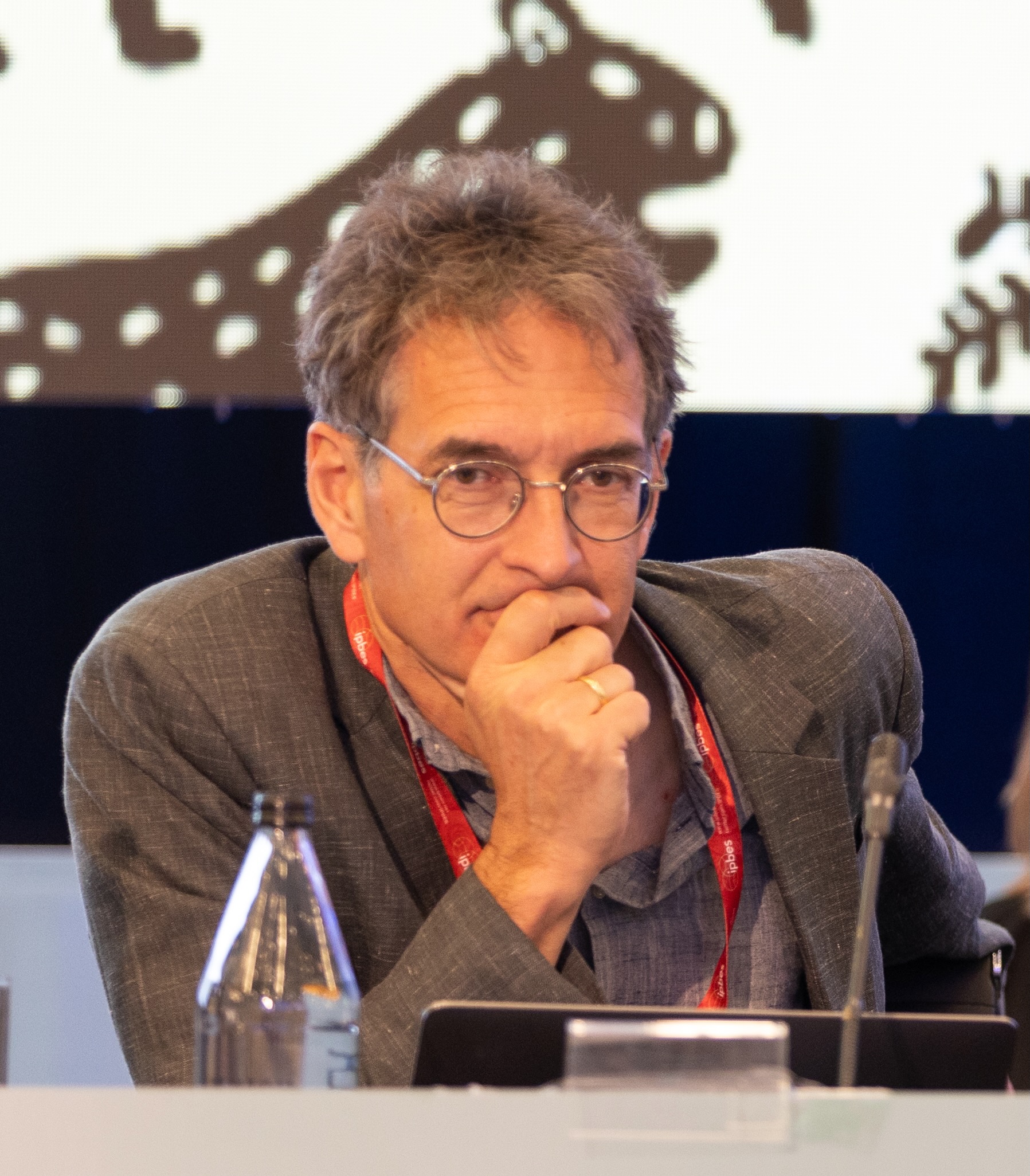At the end of 2024, several UN conferences came to an end, some of them un- or under-observed by the media, all of which were concerned with preserving our environment. The COP29 climate conference in Baku, Azerbaijan, received the most attention: “When reality doesn’t give more” (Tagesschau1 ), “At best, the avoidance of a diplomatic disaster” (RND2). It’s a familiar story. Many people travel to such a conference, and at the end, there are either frustrated or apocalyptic reports. If there are any positive results, they are either incomprehensible or perceived as irrelevant.
What remains?
It is 2025 and we are still on a disastrous path of accelerating climate change, species loss and environmental pollution. The headline in Die Zeit3 on the Conference of the Parties to the Convention on Biological Diversity in Cali, Columbia, which explains “Why summits like this are changing the world” is surprising. Yes, why is that?
UN Conferences of the Parties
A brief look back: 1992, the Berlin Wall had fallen. Liberal democracies were in vogue. The Brundtland Report4 and the Limits to Growth Study5 had been published long before. At the summit in Rio de Janeiro, the global community agreed under the umbrella of the United Nations to finally tackle environmental problems together.
The Climate, Biodiversity, Desertification and Wetlands Conventions were ratified. The Climate Convention (UNFCCC, today 198 member states) and the Convention on Biodiversity (CBD, 196 member states) in particular are reported in the media, e.g. when it comes to the agreement of targets, most prominently the 1.5° target of Paris 2015.
Policy-relevant compilation of scientific knowledge
But how do such resolutions come about? The basis for these agreements, which are binding under international law, are the so-called assessment reports. Governments first agree on the content and pose the questions that need to be answered. 190 states define a very extensive homework assignment. And who works on it?
Scientists. They apply (professional suitability, experience) and are nominated by their governments (legitimisation). The final team of authors is determined by the office of the respective convention, resulting in international, interdisciplinary, multi-cultural, simply diverse teams that compile the state of knowledge and work on the homework assignment.
This takes a few years. Policy-relevant synthesis of scientific publications is somewhat the supreme discipline of policy advice. Several thousand publications are analysed, interpreted and classified. The basis is therefore what is referred to in the media as a “study”, just a lot of them. In this way, teams of authors skim off the “cream” of scientific knowledge. After all, behind every single study are several authors, years of work and a review process.
We’ll cut short the digression that mistakes can of course also happen (they’re all human), or that studies can be falsified for dishonest reasons (ditto). Just this much: Yes, this does happen, and the reasons for this are well known and the scientific system is constantly improving its own control mechanisms. This means that such cases are an absolute exception. And it is precisely when knowledge on a topic is gathered from all corners that outliers with particular results stand out and are scrutinised more closely. The core of the matter remains the same: Science was and is the foundation of the success of our civilisations. Or do you want to live in a world without antibiotics?
Windhoek, Namibia, 2024: IPBES-11
One of the conferences that ended successfully last December was IPBES-11(1) . Two reports were adopted at this conference. The report on “Transformative Change” and the report on the interrelationships between biodiversity, food security, health, water and climate, the so-called “Nexus Assessment”. While the latter shows the state of these core parameters of our lives, what trends exist and how we can influence them, the former shows what steps and measures are necessary and possible for social change. Both reports point out countless possible solutions, but also state that silo-type thinking does not provide any solutions. Interministerial cooperation is necessary.
(1) IPBES is the scientific intergovernmental advisory organisation for the Convention on Biological Diversity. It is analogous to the IPCC, which prepares the scientific basis for the UN Framework Convention on Climate Change (UNFCCC).
Who actually reads these reports?
The “Nexus Assessment”, for example, is 1,900 pages long. Nobody reads it in its entirety, especially not politicians. A summary is needed – for decision-makers, the summary for policy makers: on 57 pages, 39 core statements summarise the 1,900 pages of the report and thus 6,500 scientific publications. The report itself becomes a reference work, providing the rationale and explanations for this summary, which is the decisive document negotiated at such a conference. Sentence by sentence is discussed in plenary. The text only continues if no one objects. Tedious. At the end, the message is “I see no objections, so decided!”, a single hammer falls and a load is lifted from many people’s hearts because they have spent a week struggling over many individual formulations (Figure 1).

Figure 1: If there is no agreement in the actual meeting, negotiations continue in a smaller circle, in so-called “Friends of the Chair” groups. Taylor Rickets.
And what happens? Nothing? Wrong! Unfortunately not enough
After three years of work on such a report (the author of these lines was involved in both the 2019 Global Assessment and the IPBES Nexus Report), it is of course incredibly frustrating to see how little impact this work has had and how slowly all these policy-relevant but non-prescriptive proposals have been implemented.
But a distinction must be made here between the legally binding decisions, such as the Paris Agreement, which also had consequences for German climate legislation with the groundbreaking judgement of the Federal Constitutional Court in 2021 (Ref. 1 BvR 2656/18). The reports also have another effect. In law, this is referred to as “soft law”. The principle of unanimity means that these texts are accepted by all member states. Any government can adopt them as its own. And in the long term, that is exactly what happens. Science explains the world to politics. It is no longer questioned that biodiversity is the basis for functioning ecosystems. And reasonably competent politicians do not doubt climate change and its man-made causes. But it has taken a long time, too long. And the last sceptics are too loud in the media.
And it’s also not true that nothing is happening. The last 75 years of human history have been quite a success story. We actually produce more than enough food to feed 10 billion people or more. Infant mortality has fallen significantly, as have birth rates and education. Yes, this is all based on technologies that require fossil fuels. But we have also developed alternatives. The growth in renewable energy production continues to grow exponentially. And while the world was still facing a global temperature rise of +3.5° in 2009, the measures taken by all countries since the Paris Agreement have now resulted in a trajectory of +2.1°. Environmental conferences do change the world.
But something else is reassuring: people are talking and talking to each other. Despite all the disputes in the negotiations, I always find that reassuring. Government representatives sit next to each other, sorted alphabetically by country name. So two people can sit together who either live thousands of miles away or who don’t see eye to eye at home. This consensus is becoming fragile. The right of the strongest seems to be fading in favour of the more scientifically convincing argument. However, the vast majority at such a conference still realise that “Make somebody great again” is a completely useless attitude. Problems on our planet must be solved together. Thanks to globalisation, we are simply too close to each other for that.
Sources
1 Schreiber, J. UN-Klimakonferenz: Einigung unter schweren Vorzeichen. tagesschau.de.
2 Beigel, L. Klimakonferenz in Baku: Was auf der COP29 beschlossen wurde – und was nicht (2024).
3 Lüdemann, D., Walch-Nasseri, F., Habekuß, F. & Kermer, M. Weltnaturgipfel in Kolumbien: Warum Gipfel wie dieser die Welt verändern. Die Zeit (2024).
4 Kopfmüller, J., Luks, F. & Siebenhüner, B. 20 Jahre Brundtland-Bericht. ÖW 22, (2007).
5 Meadows, D. H., Randers, J. & Meadows, D. L. The Limits to Growth: The 30-Year Update. (Chelsea Green Publishing Company, White River Junction, Vt, 2004).

